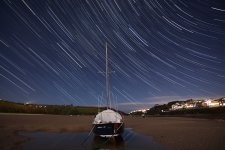Melissa Hinton
New member
Hi everyone. I have a D7100 and I'm trying as hard as I can to figure out how to take pictures of stars with trails. I've watched countless youtube videos; I've read several tutorials as well. But I musttbe doing something wrong, because my photos come out pure black. I am using an 18-55mm lens. I don't know what I am doing. I am totally desperate, please help me. I'm a total idiot and this is the first camera I've owned outside of a cellphone and those disposable cameras that were popular in the 80's and 90's. I honestly need a step-by-step, possibly pictures included, to show me what to do as far as the settings go. Pleeeease. Thank y'all 





